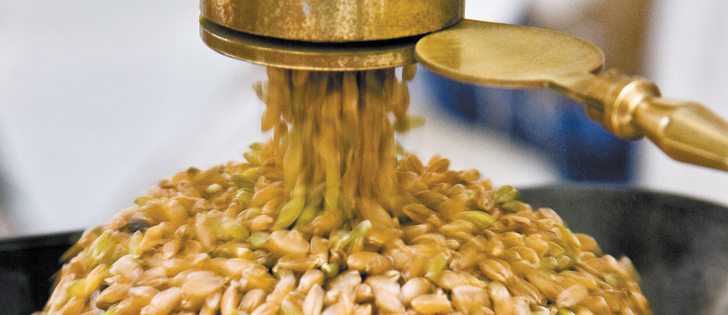Co-operatives give small meat and vegetable producers in Sudbury and Dryden area new marketing options
DRESDEN, Ont. — A new choice for consumers has emerged in northern Ontario — food retail co-operatives.
There are only two, but they’re having a significant impact, say Jen Springett of the Cloverleaf Food Co-operative in Dryden and Peggy Baillie, executive director of the Local Organic Foods Co-ops Network.
“What we’re doing is trying to reverse that trend (of retail concentration) so there’s more control within communities of the food we eat,” Baillie said.
Baillie and her husband are small farmers who operate 45 minutes from Sudbury, Ont. They sell their meat chickens and vegetables through farmers markets, farmgate sales and the Eat Local Sudbury co-operative.
Read Also

Farming Smarter receives financial boost from Alberta government for potato research
Farming Smarter near Lethbridge got a boost to its research equipment, thanks to the Alberta government’s increase in funding for research associations.
Incorporated in 2007, Eat Local Sudbury began with a stall at the city’s seasonal farmers market but now has a permanent, year-round location downtown.
The priority is given to food produced by farms within 240 kilo-metres of the city and then from elsewhere in Ontario.
“We’re able to work with some of the smaller farmers that other retailers are not interested in and then those farmers can grow their business. I’ve seen that happen myself,” Baillie said.
There’s a similar story in Dryden, four hours west Thunder Bay.
Springett, who had a key role in founding the Cloverbelt co-op, said it connects close to 50 farmers and other businesses in the region to consumers.
Co-op members send in their orders over the weekend. In Dryden, a distribution location is open every Tuesday, and there are now monthly distribution locations in Kenora, Sioux Lookout, Upsala and Ignace.
“We’ve grown to a 1,000 member families since we started. That’s significant, especially considering the small population of these communities,” Springett said.
“I think there’s a real interest in local food, and the people here really want to support their communities. We support fairly priced food, including being fairly priced to the farmers so they get enough value for their products — that’s 95 percent of the retail price.”
Springett is a volunteer, and there are also two paid employees.
Access to local, high-quality food is important to the communities, she said.
Without it, families would need to rely on retail chains, which truck food from assembly points in Winnipeg or Toronto.
The Cloverbelt co-op also has a community greenhouse and garden and offers workshops in food preparation and storage.
It has also been supporting the development of local food options for remote First Nations communities in the region.
The plan is to develop a regional distribution centre at Sioux Lookout that will better serve, from a logistical standpoint, 31 to 33 communities.
In time, it’s hoped two-way trade can be developed with goods flowing south as well as north.
Food co-ops are more numerous in southern Ontario — close to 50, according to Baillie — but the amount of food they handle is small compared to the big chains.
“I’d like to have co-operatives in every region of the province in another 10 years. I’d like to see 250 food co-operatives operating by that time,” Baillie said.
“We need to change the food system. We need to change what people have access to.”
Founded in 2009, the Local Organic Foods Co-ops Network operates with four part-time staff, a shoe-string budget and the support of volunteers who help co-ordinate the enterprises and deliver training opportunities, everything from business management to food procurement and food handling.
“We’re the only association in Canada that offers direct support for the development of food co-ops,” Baillie said.
She said Quebec co-operatives of all kinds, including food retail co-ops, are supported by a government department.
Every co-op is a bit different, Baillie said.
In Toronto, for instance, food co-ops often serve populations located in what are known as food deserts, which are communities in which access to traditional grocery stores is limited.
Others cater to higher-end venues where there is strong demand for organic and natural products.

















